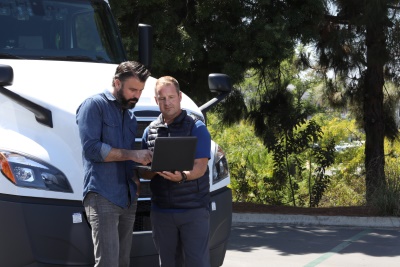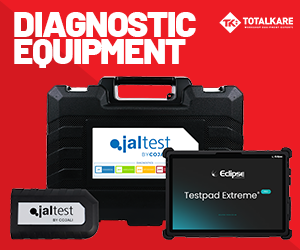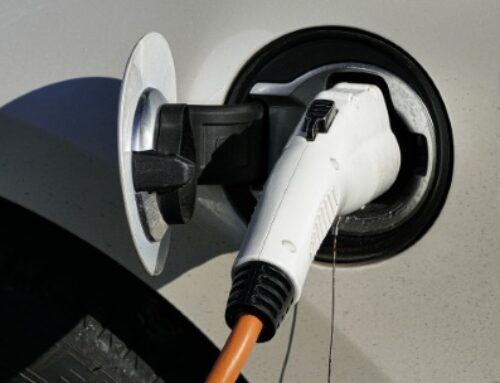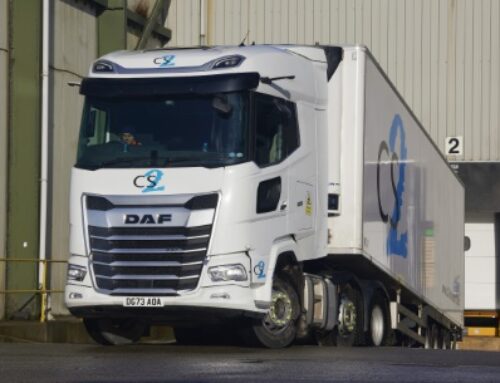Driving up standards with blended coaching
 Oliver Temple, channel sales leader EMEA & APAC at telematics and safety specialist Lytx, offers his perspective on how a blended coaching model can benefit commercial drivers
Oliver Temple, channel sales leader EMEA & APAC at telematics and safety specialist Lytx, offers his perspective on how a blended coaching model can benefit commercial drivers
According to the Royal Society for the Prevention of Accidents (RoSPA), human behaviour remains the single biggest factor in road safety, contributing to as many as 95 per cent of all collisions. Specific causes can range from speeding and fatigue to distraction and simple lapses in judgement, so commercial fleets need to be able to identify these risks and act on them.
Most fleet managers recognise that a driver-focused approach is the most effective way to deliver safety improvements. Technologies such as intelligent video telematics can play a critical role in helping drivers and managers to spot risky behaviours, but technology alone doesn’t deliver long-lasting impact.
The challenge for fleets was outlined in a recent study from the University of California San Diego which revealed that, without active human coaching, behaviour change doesn’t stick.
How then, can fleet managers combine technology and human expertise to deliver coaching sessions that are effective at scale?
Personalised, manager-led sessions
To create accountability and long-term behavioural change, it’s vital that fleets provide regular in-person coaching sessions. Video-led insights can play a central role. In-cab cameras equipped with artificial intelligence are able to identify whether a driver is displaying signs of risky behaviour such as failure to wear a seatbelt, eating or drinking or using a mobile device. These insights can then be used to guide sessions and encourage discussion.
 One of the most effective ways to achieve this is to physically review footage. This powerful visual demonstrates how even brief lapses in concentration can put drivers at risk – and where small behavioural changes can make a difference.
One of the most effective ways to achieve this is to physically review footage. This powerful visual demonstrates how even brief lapses in concentration can put drivers at risk – and where small behavioural changes can make a difference.
Being able to interpret and reinforce learning in this way supports drivers to sustain good habits over time. This was evident in our 2025 Road Safety Report; for every 100 coaching sessions undertaken, 73 resulted in the behaviour not being repeated over the next two months.
Managers can also use this time to offer best practice advice based on the bigger picture. Large amounts of data captured by intelligent video can reveal trends.
For example, speeding might be becoming more prevalent, or perhaps drivers are showing an increased amount of fatigue on Friday evening shifts. Manager and driver can then enter into a discussion about how both sides can act and where additional support may be needed.
Regular human interaction also helps managers to gather a fuller understanding of the pressures a driver may be under or to recognise factors that may not be apparent from footage alone. A study commissioned by Geotab revealed that over half (55 per cent) of drivers feel uncomfortable approaching their employer for support with stress and other mental health concerns.
Insights gathered from video can help ease this by alerting managers to any unusual or out-of-character behaviours which can then be used as a conversation starter.
Self-guided coaching
In a sector where the majority of the workforce is permanently out on the road, getting two people in the same room isn’t always easy. Self-guided coaching is one option that can be used as a ‘top up’ in between in-person sessions and when managers aren’t physically present.
 The availability of video footage capturing risky driving behaviours allows drivers to log on remotely and review footage independently, without needing to wait for a formal coaching session to be scheduled. The immediacy of this avoids delays and makes the incident more likely to remain in the driver’s consciousness. It also removes some of the pressure associated with a formal meeting and allows drivers to digest footage at their own pace.
The availability of video footage capturing risky driving behaviours allows drivers to log on remotely and review footage independently, without needing to wait for a formal coaching session to be scheduled. The immediacy of this avoids delays and makes the incident more likely to remain in the driver’s consciousness. It also removes some of the pressure associated with a formal meeting and allows drivers to digest footage at their own pace.
In-cab alerts
Human interaction will always be paramount to providing effective coaching. But when managers aren’t available and risk is happening out on the road, drivers need technology that can support them in the moment.
The same intelligent video technology that identifies and captures footage of risky driving behaviour can act as an extra pair of eyes for the driver. When the AI-powered camera detects that something is amiss, it will issue an audio-visual alert to the driver in real-time. In this way they are empowered to adjust their behaviour before it progresses into anything more serious.
This approach is having a significant impact on safety, with a survey from Lytx and Webfleet revealing that more than two-thirds (69 per cent) of fleet operators emphasise the importance of real-time driver alerts in reducing incidents.
Investment in safety and coaching technologies also demonstrates a commitment to driver wellbeing, with 94 per cent of fleets surveyed in the same study saying that safety technology has improved driver recruitment and retention.
The most effective safety solution is never one-size-fits-all. It’s a smart integration: AI and in-cab alerts to detect and flag risk, backed by timely, empathetic human coaching that supports long-term behavioural change. This blended approach not only helps reduce risk but also supports driver wellbeing and retention. By combining technology and people, fleets can create a safety culture where every journey ends with a safe return.












